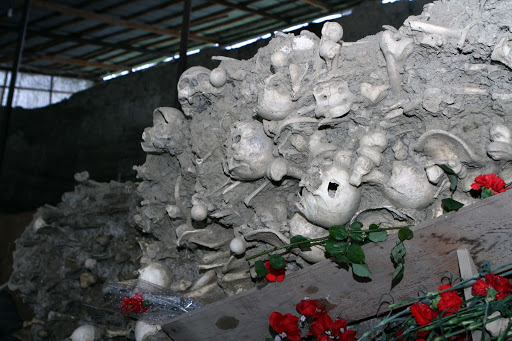On March 31, Azerbaijanis around the world paid homage to the tens of thousands of their compatriots who fell to mass genocide at the hands of Armenian nationalists in 1918. March 31 is officially recognized as the Day of Genocide of Azerbaijanis and is considered just one of several massacres committed against Azerbaijanis by Armenian forces.
Over 50,000 Azerbaijanis and other Muslims, as well as Jews and ethnic Germans living in Azerbaijan, were slaughtered from March 30-31 to April 2-3 by the Armenian Revolutionary Federation, also known as Dashnaktsutyun nationalists, which received support from the Bolsheviks revolutionaries that were taking over Russia over a century ago. Historians say the death toll from the pogroms was significantly higher than the Srebrenica massacre that formed part of the 1995 Bosnian war in the Balkans.
“Between March 30 and April 1, 1918, Tatars [Azerbaijanis] were attacked. Almost half of the Muslim population of Baku was forced to flee the city,” Justin McCarthy, an American historian at the University of Louisville, wrote in his book Death and Exile: Ethnic cleansing of Ottoman Muslims, 1821-1922. “In that period between 8,000 and 12,000 Muslims were killed in Baku alone.”
The collapse of the Russian Empire in the wake of World War I had pushed Azerbaijan into a political panic. The most dramatic events in the country started with the ousting of Russia’s Tsarist rule by Bolsheviks in the 1917 October Revolution and their promotion of ethnic Armenian politicians in Azerbaijan.
Strong patronage and support by the Bolshevik rulers in Moscow encouraged Armenians to start carrying out an aggressive plan against Azerbaijanis. Mass killings started in late March of 1918 in Baku and then spread to other regions of Azerbaijan, including Shamakhi, Guba, Karabakh, Zangezur, Goyche, Nakhchivan, Salyan and Lenkaran, amongst others. Civilians were brutally massacred, villages were burnt to ashes, and monuments were destroyed as part of a deliberate plan to rid the area of any cultural evidence of Azerbaijani existence and historical claims.
Firuz Kazimzadeh, an American professor at Yale University, says Armenians under the guise of Bolshevism tried to push out Muslims, annihilating tens of thousands of people in just a few days.
“The truth is that the Armenians, under the guise of Bolshevism, rushed on the Muslims and massacred during a few frightful days more than 12,000 people, many of whom were old men, women, and children. The March Events, as this episode became known to history, touched off a series of massacred all over Azerbaijan," Kazimzadeh wrote in his book The Struggle for Transcaucasia, 1917-1921. “Every Azerbaijani, whose Dashnak [Armenian nationalist forces] gangs can catch, was killed.”
Pogroms that took place in Guba are said to resemble a rehearsal of the Holocaust that took place decades later during World War II in Nazi Germany. Over 3,000 mountain Jews, who had been living in Azerbaijan's Guba district for approximately 1,500 years, were massacred by Armenians after they refused to cooperate. The death toll in Guba reached almost 20,000, including the killing of 16,000 Azerbaijani Muslims.
A mass grave filled with genocide victims from Guba was unearthed in 2007. Research conducted by the Institute of Archeology and Ethnography at the Azerbaijan National Academy of Sciences revealed that the grave contains more than 400 corpses of people ranging in age, including 50 children, 100 women and elderly. The Guba Genocide Memorial Complex was erected on the site in 2013.







 President Aliyev emphasized the critical role of the North-South Transport Corridor in fostering transport cooperation between Azerbaijan and Russi...
President Aliyev emphasized the critical role of the North-South Transport Corridor in fostering transport cooperation between Azerbaijan and Russi...
 Russian Foreign Minister Sergei Lavrov has reasserted that Moscow has no intentions to stop the fighting in Ukraine, even if peace talks commence.
Russian Foreign Minister Sergei Lavrov has reasserted that Moscow has no intentions to stop the fighting in Ukraine, even if peace talks commence.
 Iran has refuted reports of alleged damage to Shimon Peres Negev Nuclear Research Centre located southeast of Dimona, Israel, during the recent air...
Iran has refuted reports of alleged damage to Shimon Peres Negev Nuclear Research Centre located southeast of Dimona, Israel, during the recent air...
 Iran and Pakistan have signed eight cooperation documents in various fields, and agreed to strengthen ties to fight terrorism in the region.
Iran and Pakistan have signed eight cooperation documents in various fields, and agreed to strengthen ties to fight terrorism in the region.



